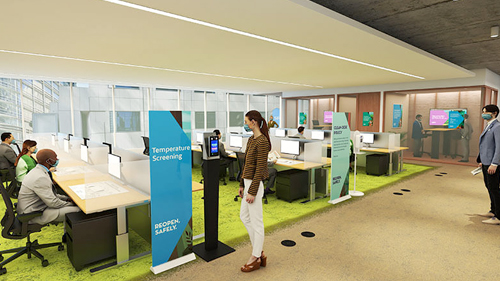As India comes out of lockdown and offices reopen, the Chief Human Resources Officer (CHRO) has assumed the role of commander-in-chief.
With COVID-19 still posing a threat, organisations are facing a unique set of tasks, including offering continued safety for staff returning to work. Though the government has permitted offices to host one-third of staff strength, companies are still wary about getting 33% of the workforce back. Here is where the CHRO steps up to lead and enable a seamless “back to work” employee experience. Companies are now looking to the CHRO for guidance on tackling employee and workplace safety.
This fundamental shift in the perception of the CHRO’s role is stark, if you consider a 2012 McKinsey-Conference Board Research report. According to this global report, CEOs did not consider CHROs as strategic business partners due to their lack of understanding of the broader business workings and wider company objectives.
But today organisations expect the CHRO to:
● Lead the reopen strategy
● Orchestrate the safe return of the workforce
● Recalibrate the ‘talent’ part of the business
● Put an agile crisis management mechanism in place
● Make provision for business continuity in the new normal
Here’s how the CHRO can help organisations build resilience while successfully pressing the Restart button.
The 30-60-90 plan
Start by creating a 30-60-90 day roadmap for this ‘new normal’. But before you set out your priorities for the days ahead, you may want to answer some critical questions such as:
● Are employees comfortable with heading back when the health crisis still looms?
● Which of the groups within the workforce need to return?
● How can you ensure employee safety at the workspace?
● What are the measures that need to be put in place for an emergency response if there is an outbreak within employee clusters?
Your 30-60-90 day plan should pivot around safety, crisis management, strategic shift allocation and capacity utilisation; business continuity planning, and talent skilling. And these strategic decisions must be data-driven. Now is a good time to leverage the technology you may already have in place, or to take incremental steps towards the digitisation of your HR processes.

Set up a command centre, but distribute control
Create an agile response mechanism, including a COVID-19 taskforce from across key functions within your organisation. Establishing a command centre with you at the helm to lead the war against the pandemic is crucial.
● Create a command centre, which gives the leadership team a real-time, consolidated view of workforce demographics, employee wellness, employee whereabouts, location of facilities, hotspots and containments zones around workplace and workforce community, emergency response preparedness, etc.
● Work closely with operational heads to efficiently manage shifts and to ensure clusters are not formed at manufacturing facilities or at cafeterias.
● Your frontline workers should include facilities and emergency response teams to help ensure workplace safety.
● Closely coordinate with the IT function to assess tactical and strategic decisions around workforce optimisation and driving efficiencies. Expedite the digital transformation journey your company may have already embarked on, and if you haven’t, now may be the right time to consider it.
You don’t need to have huge CAPEX to invest in these essential back-to-work technologies. Neither do you need to set-up these processes from scratch. Simple to implement and effective solutions like Work.com offer a range of tools designed to help businesses reopen the workplace quickly, while helping to keep employees, customers, partners and communities safe and informed.
Build resilience into the business model
WFH will continue to be part of the new normal. Companies like Tata Consultancy Services are already planning to make WFH a standard practice for 75% of their staff by 2025. As your organisation starts to acclimatise to this new normal, look at ways in which you as CHRO can build resilience into your company’s business model.
For instance, assess the skill sets and competencies of your staff and chart out a reskilling/upskilling initiative that creates cross-functional expertise. This can help you proactively address issues such as crunched workforce resources due to the COVID-19 crisis that has resulted in worker exodus. By transforming your employees into a super-charged, super-skilled workforce, you are helping to build resilience into your company.
This is not the time for our jugaad culture. It’s really the right time to leverage technology and open your workplaces quickly and safely. All you need is a platform like work.com that's driven by data visualisation and analytics, and offers tools for workplace safety and resilience.
Check out our solutions around:
● Emergency Response Management



